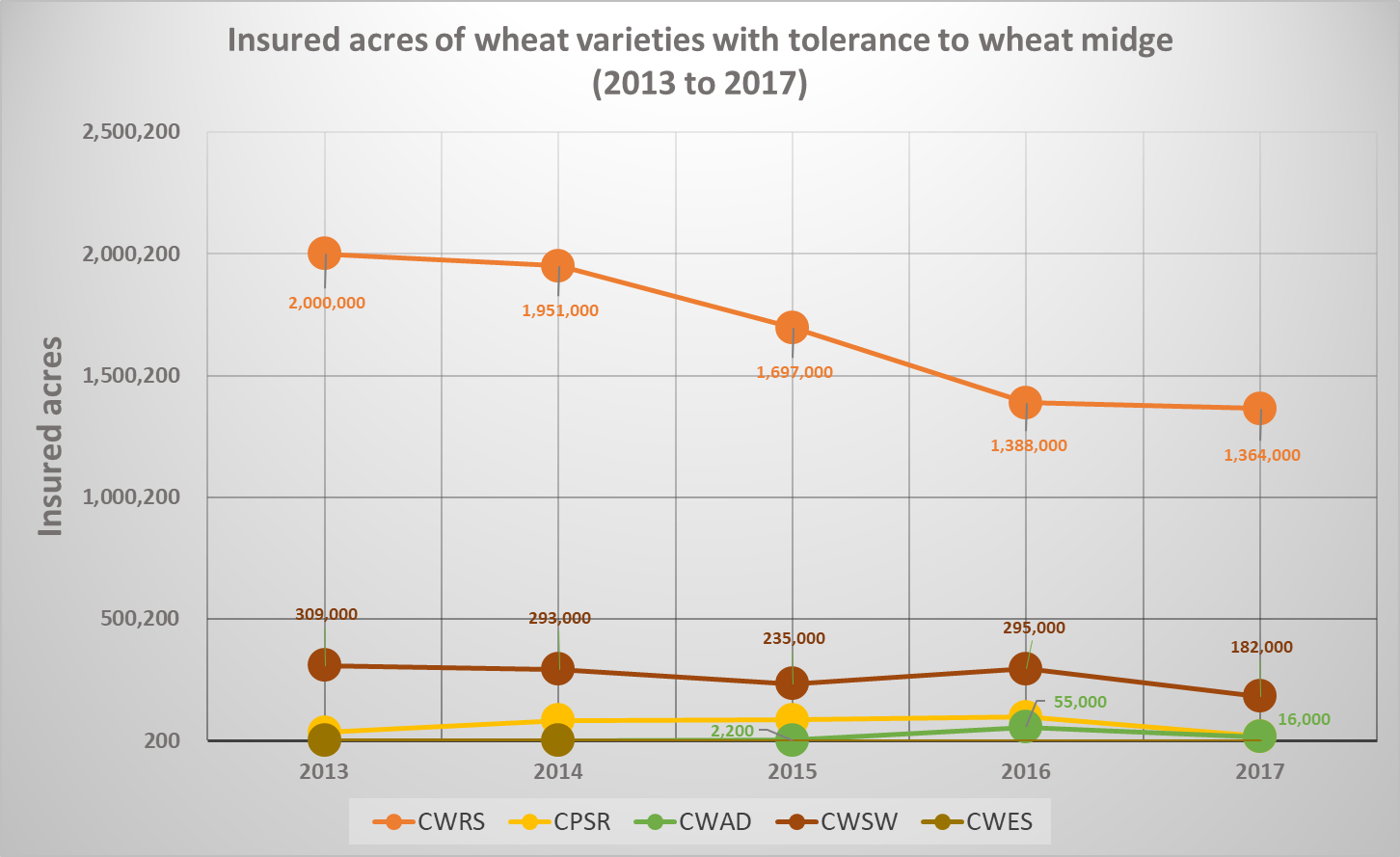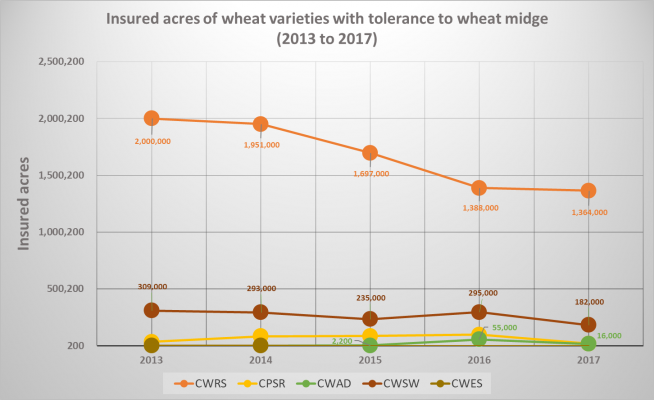- It was first found in winter wheat. The single gene (Sm1) that provides resistance was first identified in winter wheat; however, there are currently no midge-tolerant winter wheat varieties registered in Canada.
- The name Sm1 comes from the midge itself. The name Sm1 comes from the Latin name of the orange wheat blossom midge, Sitodiplosis mosellana. Interestingly, there is also an SM1 gene present in humans that is responsible for resistance to Katayama fever.
- Varieties with the Sm1 gene are relatively new. Registered wheat varieties with midge tolerance did not exist 10 years ago, as the first varieties were released in 2010 (Unity VB was one of them).
- But they are gaining market share. In total, there are 28 spring wheat varieties that are Sm1 carriers of different classes (CWRS, CPSR, CWAD, CWSW, and CWES), representing about 10,000,000 insured acres over the past 5 years, with the highest peaks in 2013 and 2014. There are 7 more varieties and are currently either seeking registration or are in seed multiplication process.
- It may have been inspired by other crops. The use of a refuge to protect a single gene resistance is not unique to Canada, let alone to the midge tolerance; it might have been, in fact, inspired by two very preeminent and important crops in the United States, namely corn and cotton, which implemented the use of a refuge to protect the Bt technology, also a single gene effect.
- Other refuge systems also exist for trait protection. There are different types of refuge systems, one of them being the interspersed refuge (a mix of tolerant and susceptible varieties) that has been chosen by the Midge Tolerant Wheat Stewardship Committee. The other type called separate refuge (susceptible crop grown in proximity of the resistant crop) is used for the Bt traits protection.
- It's not the only method of protection. The use of a variety blend, which includes a Sm1 carrier wheat variety and is monitored by the Midge Tolerant Wheat Stewardship is only one management practice used to protect your crop from the orange wheat blossom midge; other very important practices used around the world are crop rotation, chemical control, or even the wheat midge degree-day model developed by Agriculture and Agri-Food Canada.
- Midge forecasts are prepared yearly. The forecasted midge maps are developed based on historical weather and soil moisture date, coupled with field counting of midge populations and the well-known orange wheat blossom midge life-cycle (check out the links below).
- Height and Sm1 are not directly related. Even if most of the wheat varieties caring the Sm1 gene are taller than other susceptible wheat varieties, this is not a trait that is genetically associated with the presence of the gene, and some of the newest Sm1 carrier varieties are, in fact, semi-dwarfs.
- But perhaps yield and the Sm1 trait are related. Spring wheat varieties that are Sm1 carriers out-yield susceptible varieties by 10-14% on average, and it is considered an inheritable trait related to the Sm1 gene.

Useful links:
http://www.nrcresearchpress.com/doi/abs/10.4141/cjps2012-019#.WrkQVsGG-Uk
https://www.sciencedirect.com/topics/medicine-and-dentistry/schistosoma-mansoni
http://www.southwestfarmpress.com/cotton/farmers-encouraged-plant-refuge-preserve-bt-technology
http://www1.agric.gov.ab.ca/$department/deptdocs.nsf/all/prm16530
http://www.saskwheatcommission.com/producer-info/wheat-midge-forecast-map/


